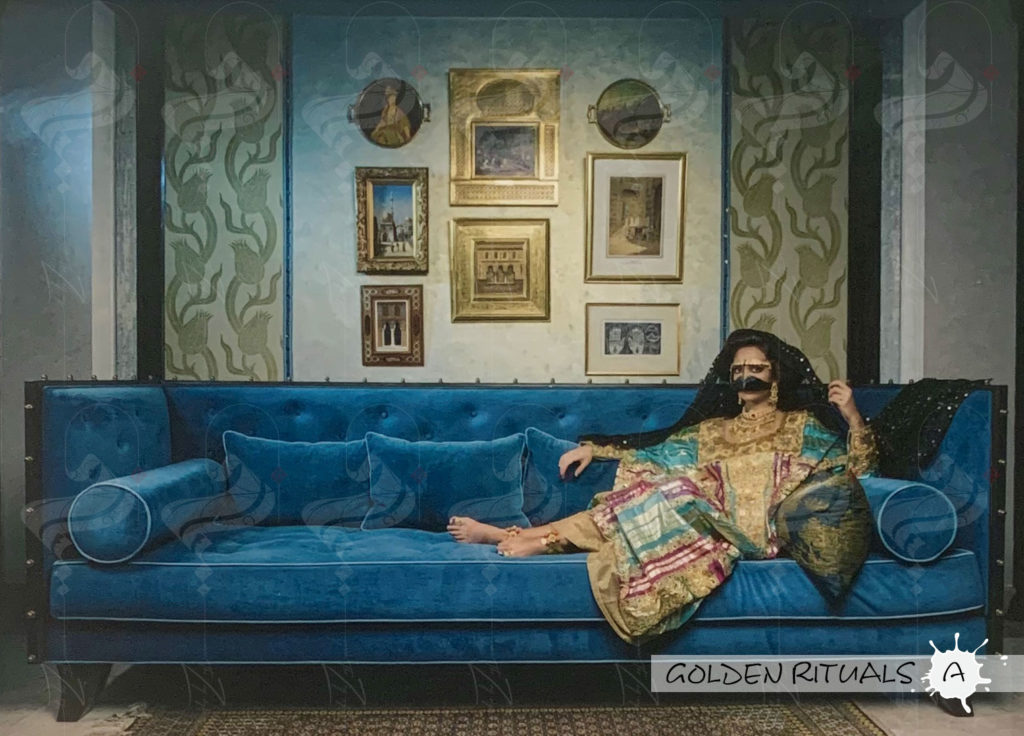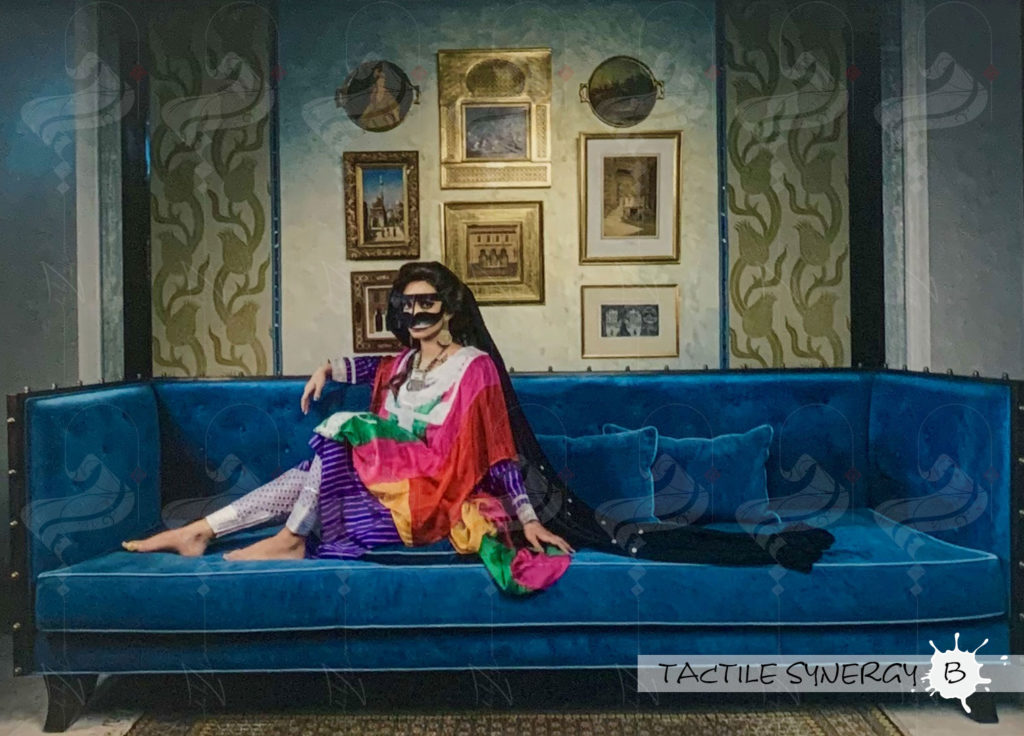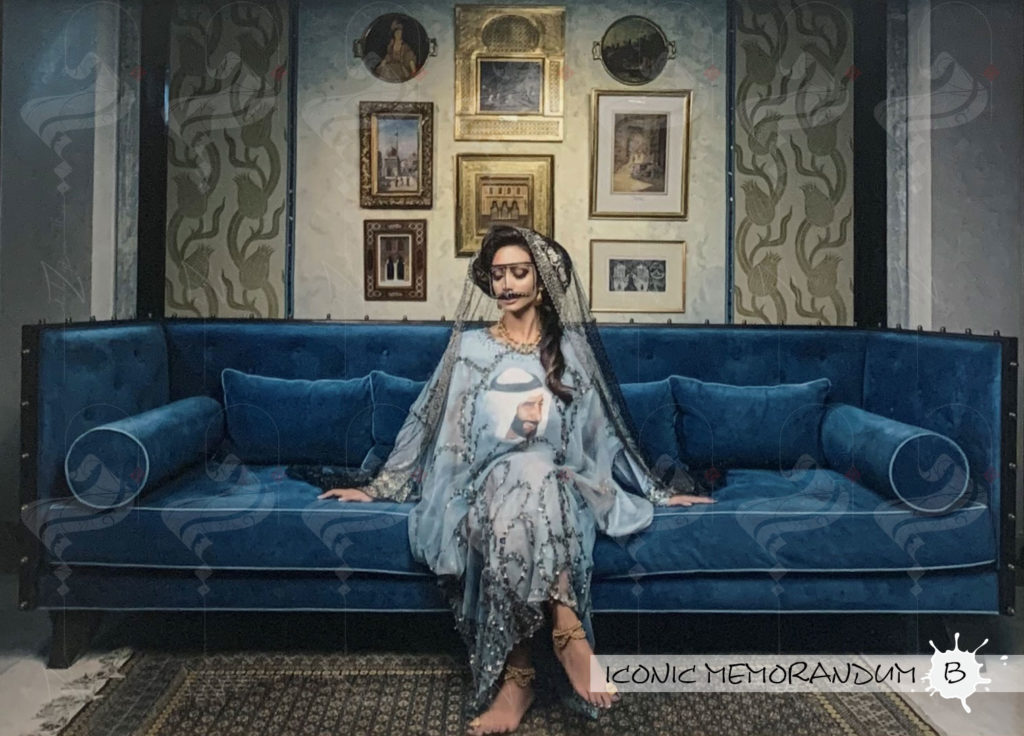“An ode to the past, a nod to the future”
The Sofa Series, a collaboration between the Zay Initiative and renowned photographer Issa Saleh Al Kindy, is one of our many collaborations where we strive to live up to the spirit embodied in this quote.
By continuously collaborating with artists, designers, scholars and institutions, old narratives are kept alive and intercultural dialogue is encouraged. This highlights our shared humanity, and it inspires us to create a sustainable future heritage.
The Sofa Series consists of four images, in different formats, depicting a collection of Arab dress and adornment representing the stories of significant UAE women artfully captured by Issa Saleh Al Kindy. With this series, The Zay Initiative aims to celebrate the tangible and intangible heritage of UAE women ensuring their voices and their heritage transcends time.
Photographer
Issa Saleh Al Kindy is an Omani photographer who was raised across the Middle East and North Africa. His exposure to different cultures infused in him an appreciation for ethnic heritage and modern tradition; elements which are evident in his photography. His work has been featured on several covers of Forbes and CEO magazines, and he is a regular contributor to Marie Claire and other publications. Issa’s work has received recognition in various competitions, nationally and internationally. His client portfolio includes brands such as Cartier, Apple, Unilever, and many others. He exhibits his fine art photography at The Empty Quarter Gallery in Dubai.
Visit his website here.

TELI SYMPHONY
A unique dress on many levels. It marks the introduction of Japanese metallic thread in traditional telli work. This thawb was previously owned by Shaikha Salama Bint Hamdan Al Nahyan, wife of Abu Dhabi Crown Prince, Shaikh Mohammed bin Zayed bin Sultan Al Nahyan, a childhood friend and confidant of our founder, Dr Reem el Mutwalli who has watched her highness wear it on many occasions. Later, she herself wore it at many official functions during her time at the Abu Dhabi Cultural Foundation in the 1980s and 1990s. It is now part of The Zay Initiative Collection.
The ensemble consists of two pieces. A chequered brocaded silk chiffon thawb, a loose overflowing garment worn over the kandurah, made of matching polka dot silk brocade locally known as Bu Tilah.
It is embellished with telli, a traditional UAE lace-like ribbon or cord work that is applied to the neckline and sleeve cuffs. Traditionally gold and silver straw or kus were braided with single-coloured cotton threads. Here we see the unique and rare use of rainbow-coloured metallic thread combined with multi-coloured cotton threads.
This ensemble can be viewed in our Collection directory here and here.

GOLDEN RITUALS
This ensemble was commissioned by Shaikha Hamda bint Mohamad al Nahyan, maternal aunt to the current ruler of the UAE, HH Shaikh Khalifa bin Zayed al Nahyan, as a special gift to commemorate our founder, Dr Reem el Mutwalli’s PhD degree in 1999.
Shaikha Hamda instructed the late Fatima bint Sa’ad, a well-known palace dressmaker to create this thawb and kandurah ensemble. It was based on and copied from her traditional wedding dress and worn with a gold studded burgu in the same style.
The style is a formal presidential ryasi – a one-piece garment heavily encrusted with 24-carat gold. A thawb kandurah ryasi is a post-1990 adaptation of the traditional overgarment thawb and tunic kandurah worn underneath, where the two garments are joined at the neckline creating one outfit.
Here the thawb or outer garment is made of paper-thin striped gold brocaded khus silk, lavishly embellished on the neckline, central axis, and sleeve cuffs with stamped 24-carat gold discs in two sizes. Coin-like discs known as huruf or mishakhis (15mm dia.), and smaller discs with a protruding convex centre known nyum (9mm dia.). The inner satin silk kandurah functions as a lining with matching embellishment on the sleeve cuffs.
Both Shaikha Hamda and the late Fatima bint Sa’ad were instrumental in helping with the research work for Dr Reem el Mutwalli’s book Sultani – Traditions Renewed. Changes in women’s traditional dress In the United Arab Emirates during the reign of the late Shaykh Zâyid Bin Sultan Âl Nahyân, 1966-2004.
This ensemble can be viewed in our Collection directory here.

TACTILE SYNERGY
This ensemble is an excellent representation of the traditional UAE dress components of the early 1970-1980s. It consists of five different garments each of different provenance. We are in the process of adding it to the Collection directory.
The Burgu – a face mask that covers most of the face features.
The Shaylah – a black cotton gauze headscarf. In this example the fabric engulfs most of the body, creating an extra layer of concealment.
The Thawb – a loose-fitting, formal over-garment. Here, the garment is made of panels of different coloured light chiffon in Seersucker; a thin, puckered, and chequered cloth used for spring and summer wear. The word seersucker comes from the Persian word ‘shiroshakar’ meaning ‘milk and sugar’ referring to the texture of the fabric.
In the UAE, this garment is commonly referred to as ‘thawb bu ghafas’ meaning cage, or ‘thawb shirbak al ghurfa’ meaning window. Both these terms refer to the texture of the fabric. As the garment is panelled it is also known as ‘myaza’, from the Arabic mjaza meaning panelled. The full name, therefore, is Thawb myaza Bu Ghafas Telli Fatlah.
On the wide neckline and the central axis extending down to the mid-body, the garment is decorated with telli work. Telli comprises a flat metal straw or khus plaited together with coloured, in this case, white, cotton threads thus known as telli fatlah.
The Kandurah – a tunic dress worn under the thawb. Here is one made of traditional striped opaque silk known as Sultani fabric. The fabric that inspired the name of the Sultani book. Note the traditional UAE left side opening at the neckline which, along with the sleeve cuffs, is also adorned with telli to match the thawb.
The Sarwal – printed cotton underpants decorated at the ankle cuffs with zari, silver or gold machine embroidery.
This ensemble shows how these articles of dress were traditionally worn together in an array of mismatched textures and colours.

ICONIC MEMORANDUM
It began with a hand-painted silk portrait depicting the face of Shaikh Zayed wearing the traditional UAE head-dress, painted by Shaikha Alyaziah bint Nahyan bin Mubarak al Nahyan, then an aspiring artist, today an established UAE artist. The silk portrait was then turned into this thawb kandurah ensemble designed by her mother Shaikha Fakhira bint Saeed al Nahyan. The embroidery work and tailoring were carried out by skilled artisans.
Dating back to the 1990s, the garment is decorated on the front with floral patterns using beads and metal pieces in different colours and shapes with the embroidery repeated on the cuffs and the area around the collar where the two layers are joined.
This style of garment is known as a ryasi, where the two traditional garments, thawb and kandurah, are combined into one garment. In this format, the kandurah has evolved into the inner slip of the thawb and is attached to it at the neckline.
The unique garment was worn on many occasions by Shaikha Alyaziah and eventually gifted to the Zay Initiative Collection. It was first exhibited at a private exhibition accompanying the launch of the first edition of Dr Reem el Mutwalli’s book Sultani, Traditions Renewed, Changes in women’s traditional dress In the United Arab Emirates during the reign of the late Shaikh Zayid Bin Sultan Al Nahyan, (1966-2004) at the palace of Shaikh Sultan bin Khalifa bin Zayed Al Nahyan in 2011.
This ensemble can be viewed in our Collection directory here.
Limited edition prints of these images are available in different formats and sizes to be acquired by art collectors, cultural and heritage connoisseurs, institutions, and corporations interested in investing in, and supporting UAE art, fashion and heritage. Acquisition details are available here. For enquiries, contact our Strategic Advisor, Emma Farmer at emma@thezay.org.


Latest Comments
POST YOUR OPINIONGrace Ong Chu Wen
August 31, 2020Are the hurufs and mishakis of Emirati origin?
Ansie
September 8, 2020Hi Grace
Yes, it is. Please look out for our digital archive which will launch soon, where you can read all about these garments and their origin.
Zay - The Art of UAE Dress: Design Competition - The Zay Initiative
December 2, 2021[…] Dubai Downtown invited designers to draw on three iconic UAE traditional outfits as captured in The ‘Sofa Series’, a collection of limited edition images by Omani photographer, Issa Saleh Al Kindi as well as Hotel […]